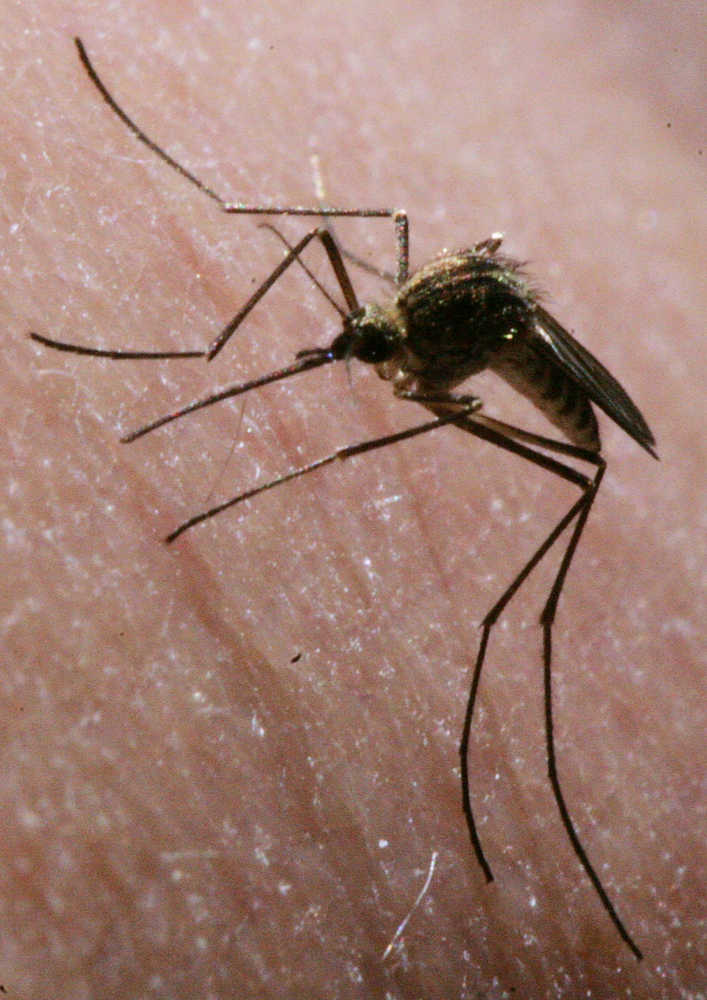FAIRBANKS — Alaska winters are long, dark and cold and the coming of summer is greeted with relief and delight. However, that delight is tempered by the arrival of another sign of summer — the mosquito.
Alaska has 34 species of mosquito, and the first of the season made their unwelcome presence known about a week ago. Large and lumbering, these snow mosquitoes, as they are known, are adults that spend the winter hibernating under the snow in loose tree bark or beneath leaves. Snow mosquitoes are able to overwinter because of a process called supercooling, in which their bodies produce a kind of natural antifreeze that keeps their cells from rupturing when temperatures fall below freezing.
Female snow mosquitoes emerge with an overriding thirst for blood, which they will need in order to nourish their eggs, according to Derik S. Sikes, curator of insects at the University of Alaska Fairbanks Museum of the North.
“Fertilized females overwinter with fertilized eggs. They suck some blood, lay their eggs and they die,” Sikes said.
Only female mosquitoes eat blood, according to Sikes, while male mosquitoes eat pollen and nectar.
Mosquito populations are annual, which means the entire population dies each year and is replaced by a new generation, according to Sikes. The long-lived snow mosquitoes survive a year or slightly longer, while their smaller, faster cousins — which emerge later in the season — have much shorter lives.
“The adult lifespan of Northern Aedes — the small ones — is probably not more than eight weeks for the adults,” Sikes said. “They emerge, they mate, they lay eggs and die, and a new generation will emerge the same summer.”
Some of the smaller mosquitoes overwinter as pupae and emerge when enough thermal energy builds up. A warm winter and spring means they emerge sooner.
Other small mosquitoes overwinter as eggs, deposited by the female in just about any place that water can accumulate. Alaska’s many sloughs, bogs and marshes provide an ideal breeding ground for mosquitoes, much to the misery of human and animal alike. Mosquitoes and other biting insects can “bother” caribou calves and cause them to run until they’re exhausted, which can end in death for the calf. Other mosquitoes are “bird specialists,” according to Sikes.
“I once saw a falcon with over 30 mosquitoes on its face,” Sikes said.
Sikes recently was asked to estimate the weight of all of the mosquitoes in Alaska, and the numbers are surprising. Based on an estimate of the amount of mosquitoes killed by spiders, Sikes said every year Alaska is home to 17 trillion mosquitoes, weighing in at a whopping 96,191,666 pounds.
This number seems large until you compare it to the combined weight of all the insects in Alaska, which is anywhere from 340 million to seven billion pounds, according to Sikes. Many of these non-mosquito insects — such as black flies, no-see-ums, horseflies, fleas, lice and ticks — also bite and feed on vertebrates.
“Without a doubt, we are outnumbered,” Sikes said.

